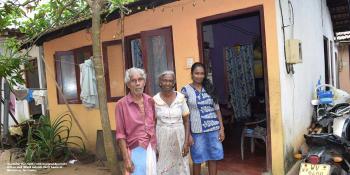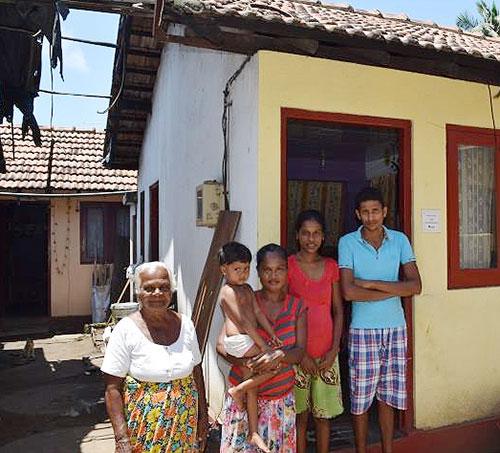
Finding strength in decent housing
Both Shashika and Nimasha were in their teens when Sri Lanka was hit by a devastating tsunami in December 2004. More than 15 years later, they are thankful they can bring up their own children in safe, secure homes.
Like many of those affected, housing would have been the main concern of Shashika’s and Nimasha’s families in the aftermath. According to a study1 households’ priority was to regain an acceptable permanent shelter.
Shashika, now 33, is thankful her three-year-old son Dihen does not have to suffer the same anxiety of living in a temporary shelter. Instead, her son can grow up in a safe and healthy environment that is conducive to studying. “Having the house is such a source of strength,” she says.
Together with her grandparents, Shashika had escaped from the tidal waves that destroyed their house in Moratuwa on the southwestern coast of Sri Lanka. But they lost all their possessions and had to salvage wooden planks to build a small hut. It shook when strong winds came and leaked during heavy rains, Shashika’s grandmother Silard recalled.
They lived in such conditions for nearly four years until they became the 10,000th homeowner family who partnered with Habitat Sri Lanka in September 2008. Together with her husband, Shashika takes care of her grandparents Arthur and Silard who can enjoy their golden years in a decent home.
After retiring as a carpenter, Arthur looks forward to spending time with his great grandson. He is always impatiently waiting for his “little boy to come back from school.”

Nimasha (second from right) with her family in front of their house in
Moratuwa, Sri Lanka. Her daughter is carried by Shreya (second from left).
In another Moratuwa community, Nimasha was just 12 — a year older than Shashika then — when her family was hit by the tsunami. They lived in a wooden shack for four years after their house was destroyed. In June 2008, her family moved into a new home that was rebuilt on the same spot where their old house stood.
Nimasha is now the mother of four-year-old girl. Her older brother Niroshan works as a carpenter. “We all support one another,” says Nirmasha’s mother Shreya.
To this day, Shreya is fearful of rain as it makes her recall the devastating tsunami. “I’m terrified every time it rains. But it also reminds me of how lucky my family and I are. I’m so thankful to have this home.”
Shreya and her husband Nishantha live together with both their mothers. The couple’s son Niroshan and daughter Nimasha and her family are also residing in the same home. “It’s a little small to accommodate all of us. But at least all of us are safe under this strong roof,” comments Shreya.
Growing up in Habitat homes, Shashika and Nimasha can now provide their own children with a secure and stable environment to live and study in. They are among more than 2,800 tsunami-affected families who rebuilt their homes with Habitat Sri Lanka as of September 2009.
Since 1994, Habitat Sri Lanka has enabled more than 26,600 families to gain strength, stability and self-reliance through shelter. Visit habitatsrilanka.org for more information or connect via facebook.com/habitatsrilanka/
1. Jayasuriya, Sisira & Steele, Paul & Weerakoon, Dushni & Knight-John, Malathy & Arunatilake, Nisha. (2005). Post-Tsunami Recovery: Issues and Challenges in Sri Lanka.